Pattern Services and Revisions
If you are an Annies customer and have a question about the instructions on a pattern you have purchased, please visit: AnniesCatalog.com/pages/customer_care/pattern_services.html
Templates
To download templates for easy printing, view the
download instructions at the end of this book or click
the Templates chapter in the Table of Contents.

Table of Contents
EDITOR Tanya Fox
CREATIVE DIRECTOR Brad Snow
PUBLISHING SERVICES DIRECTOR Brenda Gallmeyer
MANAGING EDITOR Brooke Smith
GRAPHIC DESIGNER Nick Pierce
COPY SUPERVISOR Corene Painter
SENIOR COPY EDITOR Emily Carter
COPY EDITORS Rebecca Detwiler, Sam Mawhorter
TECHNICAL EDITOR Corene Painter
PRODUCTION ARTIST SUPERVISOR Erin Brandt
SENIOR PRODUCTION ARTIST Nicole Gage
PHOTOGRAPHY SUPERVISOR Tammy Christian
PHOTO STYLISTS Tammy Liechty, Tammy Steiner
PHOTOGRAPHY Matthew Owen
PRODUCTION ASSISTANTS Marj Morgan, Judy Neuenschwander
Copic Coloring Guide Level 4: Fine Details is published by Annies, 306 East Parr Road, Berne, IN 46711. Printed in USA. Copyright 2013 Annies. All rights reserved.
RETAIL STORES: If you would like to carry this pattern book or any other Annies publication, visit AnniesWSL.com.
RETAIL STORES: If you would like to carry this pattern book or any other Annies publication, visit AnniesWSL.com.
Every effort has been made to ensure that the instructions in this publication are complete and accurate. We cannot, however, take responsibility for human error, typographical mistakes or variations in individual work. Please visit AnniesCustomerCare.com to check for pattern updates. ISBN: 978-1-59635-575-0 1 2 3 4 5 6 7 8 9  Copyright 2013 Annies, 306 East Parr Road, Berne, IN 46711.
Copyright 2013 Annies, 306 East Parr Road, Berne, IN 46711.
All rights reserved. This publication may not be reproduced or transmitted in part or in whole without written permission from the publisher.

Something big happened. When Marianne Walker and I set out to write a book about coloring with Copic markers, we had no idea just how huge the project would become; growing from one book into the now four-book series that is the
Copic Coloring Guide series.
In this final book, we want to share with you the importance of all of those little details that can take your work beyond the coloring stage and into the world of art. To do this, we focus on light source and how it affects an image, the importance of value and contrast, expanding the use of your Copic products, mixing mediums, special effects techniques, and how to plan for and tackle complex images. By paying special attention to the details, you can make big things happen! Our BIG project couldnt have happened without some very special folks whose attention to detail (both big and small) have helped us produce this wonderful series. A colossal thank-you to the editorial trio of Tanya, Brooke and Corene, and the entire staff at Annies for sharing both our vision and our excitement. Thanks also to Too Corporation, Imagination International Inc., and the entire Copic team for your belief and support of this project. We appreciate the hundreds of art and craft friends whose love of Copics prompted this series.
And of course, we couldnt have done this without the support of our familiesthe biggest thanks to you for taking care of the details as we went out and colored our world! Colleen and Marianne
Its the little details that are vital. Little things make big things happen.John Wooden
In this final book of the
Copic Coloring Guide series, we want to take you to the artist level, thinking about and coloring images in a realistic and true to nature way. To do this, we need to tackle the topic of light. Talking about light source and creating highlights and shadows can be daunting, so we want to start with some basic terminology. Often, using and understanding the same language can break down barriers of frustration and uncertainty.
 While there are many more terms than what we will cover here and much more detailed descriptions of these terms, we want to keep this section simple and present just the basic, essential information.
While there are many more terms than what we will cover here and much more detailed descriptions of these terms, we want to keep this section simple and present just the basic, essential information.
The definitions here should be enough to make you comfortable tackling the coloring of any of your stamped or digital images.Light Source: The direction from which a dominant light originates. The placement directs the eye and will affect every aspect of the image. The light source visually tells where to add light values and dark values. Value: Different shades of gray from white to black. Shading: Gradient blending from light value to dark value. Highlight: The area(s) where light hits the object first and fullest.
Illustrated by the very lightest value. Mid-Tone: The area(s) not in direct light or direct shadow. Form Shadow: The area(s) on an object that receive little to no light. Often called core shadow. Cast Shadow: The area(s) on the adjacent surface where the light is blocked by the object. Contrast: The difference between light and dark values. Low Contrast: An image having only light and middle values. Low Contrast: An image having only light and middle values.
The image will tend to look soft and flat. High Contrast: An image having a variation of light to dark values. The image will look more visually appealing and 3-D. 
Here are some ways to check an image for contrast:Squint
By squinting, the details lose focus and the value becomes more visible.
Hold Image at Arms Length
By holding the image further away, the details lose focus and the value becomes more visible.
Turn Image to Black & White
The color is removed and the value becomes the main focus.
Value visually defines an object and gives it depth and dimension.Value visually defines an object and gives it depth and dimension.
Without a variety of light and dark values, an object appears as flat as the paper it is illustrated on.
Here is a simple apple colored with no variation in values.
Here is an activity to help train your eye to see value: Remove all color and replace it with shades of gray. When an image is colored, we tend to focus on the hue instead of the value. By removing the color and using different shades of gray, we can see the value without the distraction of color. This is called a grayscale or a value study.


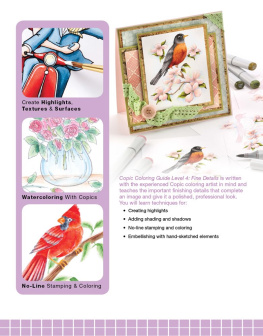

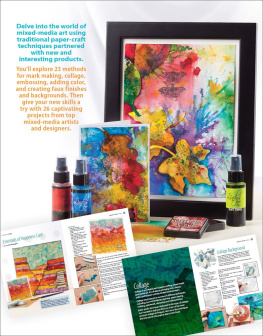
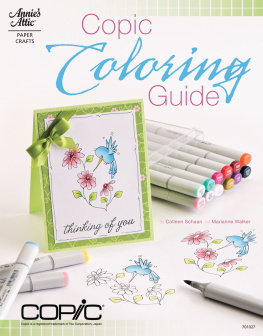

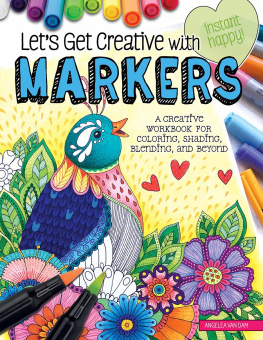

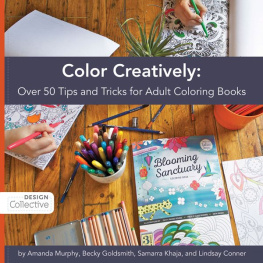
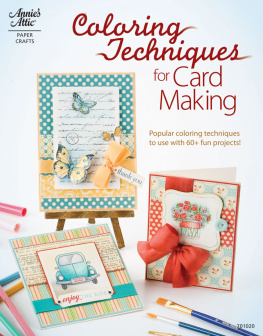



 Copyright 2013 Annies, 306 East Parr Road, Berne, IN 46711.
Copyright 2013 Annies, 306 East Parr Road, Berne, IN 46711. Something big happened. When Marianne Walker and I set out to write a book about coloring with Copic markers, we had no idea just how huge the project would become; growing from one book into the now four-book series that is the Copic Coloring Guide series.
Something big happened. When Marianne Walker and I set out to write a book about coloring with Copic markers, we had no idea just how huge the project would become; growing from one book into the now four-book series that is the Copic Coloring Guide series.  While there are many more terms than what we will cover here and much more detailed descriptions of these terms, we want to keep this section simple and present just the basic, essential information.
While there are many more terms than what we will cover here and much more detailed descriptions of these terms, we want to keep this section simple and present just the basic, essential information.

